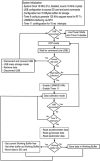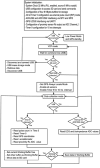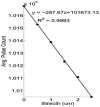Development of a Multisensory Wearable System for Monitoring Cigarette Smoking Behavior in Free-Living Conditions
- PMID: 29607211
- PMCID: PMC5877467
- DOI: 10.3390/electronics6040104
Development of a Multisensory Wearable System for Monitoring Cigarette Smoking Behavior in Free-Living Conditions
Abstract
This paper presents the development and validation of a novel multi-sensory wearable system (Personal Automatic Cigarette Tracker v2 or PACT2.0) for monitoring of cigarette smoking in free-living conditions. The contributions of the PACT2.0 system are: (1) the implementation of a complete sensor suite for monitoring of all major behavioral manifestations of cigarette smoking (lighting events, hand-to-mouth gestures, and smoke inhalations); (2) a miniaturization of the sensor hardware to enable its applicability in naturalistic settings; and (3) an introduction of new sensor modalities that may provide additional insight into smoking behavior e.g., Global Positioning System (GPS), pedometer and Electrocardiogram(ECG) or provide an easy-to-use alternative (e.g., bio-impedance respiration sensor) to traditional sensors. PACT2.0 consists of three custom-built devices: an instrumented lighter, a hand module, and a chest module. The instrumented lighter is capable of recording the time and duration of all lighting events. The hand module integrates Inertial Measurement Unit (IMU) and a Radio Frequency (RF) transmitter to track the hand-to-mouth gestures. The module also operates as a pedometer. The chest module monitors the breathing (smoke inhalation) patterns (inductive and bio-impedance respiratory sensors), cardiac activity (ECG sensor), chest movement (three-axis accelerometer), hand-to-mouth proximity (RF receiver), and captures the geo-position of the subject (GPS receiver). The accuracy of PACT2.0 sensors was evaluated in bench tests and laboratory experiments. Use of PACT2.0 for data collection in the community was validated in a 24 h study on 40 smokers. Of 943 h of recorded data, 98.6% of the data was found usable for computer analysis. The recorded information included 549 lighting events, 522/504 consumed cigarettes (from lighter data/self-registered data, respectively), 20,158/22,207 hand-to-mouth gestures (from hand IMU/proximity sensor, respectively) and 114,217/112,175 breaths (from the respiratory inductive plethysmograph (RIP)/bio-impedance sensor, respectively). The proposed system scored 8.3 ± 0.31 out of 10 on a post-study acceptability survey. The results suggest that PACT2.0 presents a reliable platform for studying of smoking behavior at the community level.
Keywords: ECG; GPS; PACT; RIP; accelerometer; bio-impedance; cigarette smoking.
Figures
















Similar articles
-
Cigarette Smoking Detection with An Inertial Sensor and A Smart Lighter.Sensors (Basel). 2019 Jan 29;19(3):570. doi: 10.3390/s19030570. Sensors (Basel). 2019. PMID: 30700056 Free PMC article.
-
Detection of Hand-to-Mouth Gestures Using a RF Operated Proximity Sensor for Monitoring Cigarette Smoking.Open Biomed Eng J. 2013 Apr 5;9:41-9. doi: 10.2174/1874120701307010041. Print 2013. Open Biomed Eng J. 2013. PMID: 23723954 Free PMC article.
-
A wearable sensor system for monitoring cigarette smoking.J Stud Alcohol Drugs. 2013 Nov;74(6):956-64. doi: 10.15288/jsad.2013.74.956. J Stud Alcohol Drugs. 2013. PMID: 24172124 Free PMC article.
-
Wearable Sensors for Monitoring of Cigarette Smoking in Free-Living: A Systematic Review.Sensors (Basel). 2019 Oct 28;19(21):4678. doi: 10.3390/s19214678. Sensors (Basel). 2019. PMID: 31661856 Free PMC article.
-
Sensors for Smoking Detection in Epidemiological Research: Scoping Review.JMIR Mhealth Uhealth. 2024 Oct 30;12:e52383. doi: 10.2196/52383. JMIR Mhealth Uhealth. 2024. PMID: 39476379 Free PMC article.
Cited by
-
An Update on the Use of Wearable Devices in Men's Health.World J Mens Health. 2023 Oct;41(4):785-795. doi: 10.5534/wjmh.220205. Epub 2023 Jan 27. World J Mens Health. 2023. PMID: 36792091 Free PMC article. Review.
-
Ambulatory Smoking Habits Investigation based on Physiology and Context (ASSIST) using wearable sensors and mobile phones: protocol for an observational study.BMJ Open. 2019 Sep 5;9(9):e028284. doi: 10.1136/bmjopen-2018-028284. BMJ Open. 2019. PMID: 31492781 Free PMC article.
-
Characterizing and Modeling Smoking Behavior Using Automatic Smoking Event Detection and Mobile Surveys in Naturalistic Environments: Observational Study.JMIR Mhealth Uhealth. 2022 Feb 18;10(2):e28159. doi: 10.2196/28159. JMIR Mhealth Uhealth. 2022. PMID: 35179512 Free PMC article.
-
Feasibility Assessment of Wearable Respiratory Monitors for Ambulatory Inhalation Topography.Int J Environ Res Public Health. 2021 Mar 14;18(6):2990. doi: 10.3390/ijerph18062990. Int J Environ Res Public Health. 2021. PMID: 33799472 Free PMC article.
-
Smartphone and Wearable Device-Based Digital Phenotyping to Understand Substance use and its Syndemics.J Med Toxicol. 2024 Apr;20(2):205-214. doi: 10.1007/s13181-024-01000-5. Epub 2024 Mar 4. J Med Toxicol. 2024. PMID: 38436819 Free PMC article.
References
-
- Smoking-Attributable Mortality, Years of Potential Life Lost, and Productivity Losses—United States, 2000–2004. [accessed on 16 November 2016]; Available online: https://www.cdc.gov/mmwr/preview/mmwrhtml/mm5745a3.htm.
-
- Hoffmann D, Djordjevic MV, Hoffmann I. The Changing Cigarette. Centers for Disease Control and Prevention (US); Atlanta, GA, USA: 2010.
-
- Results from the 2011 NSDUH: Summary of National Findings, SAMHSA, CBHSQ. [accessed on 16 November 2016]; Available online: http://www.samhsa.gov/data/sites/default/files/Revised2k11NSDUHSummNatFi....
-
- Moss RA, Hammer D, Sanders SH. The physiological effects of cigarette smoking: Implications for psychophysiological research. Biofeedback Self-Regul. 1984;9:299–309. - PubMed
Grants and funding
LinkOut - more resources
Full Text Sources
Other Literature Sources
Miscellaneous
